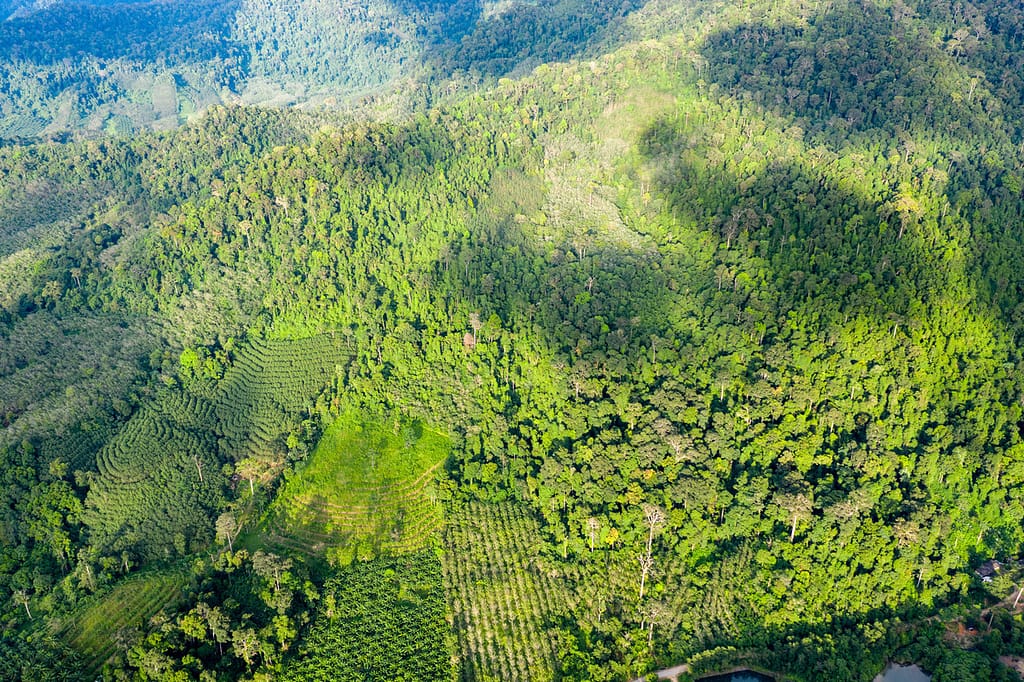Regenerative agriculture is the new buzzword for multinational corporations, and for good reason. It ticks a lot of the boxes for sustainability goals: sequesters carbon in biomass and in soil, improves on-farm biodiversity, improves water retention in the soil, and reduces land degradation and soil erosion — all while improving the nutrient density of the food. Adopting regenerative practices also makes good business sense. Companies can reduce their negative environmental impacts and actually have a positive impact on the landscapes where they are operating, while also ensuring the longevity of their supply chains.
Nestle, Cargill, Pepsi, and Walmart have all made substantial commitments toward implementing regenerative agriculture within their value chains. However, there is not much guidance available for companies to follow when attempting to shift their current agricultural system. How can they actually restore biology rather than depleting it? Regenerative agriculture is about farming in nature’s form, and nature is complex. The transition cannot be distilled down to a simple set of practices, such as avoiding tillage.

The lack of an existing framework may be one barrier for companies considering such a move. It shouldn’t be. We will explore four key steps to operationalize regenerative agriculture in the real world.
1. Determining the possible solutions and where to implement them
Where to start? Many of the companies we work with are interested in moving into regenerative agriculture but are struggling with figuring out how to do that. The first step is identifying what their most important impacts on nature are, where they are occurring, and what the opportunities are for the company. While there is currently no single way to do this, the Science Based Targets Network (SBTN) is developing a standardized materiality assessment methodology. Combining ENCORE, an industry-level assessment tool, with on-the-ground knowledge of operations and spatial data, companies can identify priority impacts and locations for further assessment. This will offer a good idea of where to focus efforts to reduce or reverse impacts and therefore where regenerative agriculture could have the greatest impact.

Alpro is a great example, leading the charge in materiality assessment and setting science-based targets, helping to identify where regenerative agriculture should be implemented within its supply chain. Metabolic previously helped Alpro set targets for their almond production in Spain, based on nitrogen use, land use, biodiversity, and freshwater impacts.
The second hurdle companies face is determining precisely which interventions to apply, where, and when. Every context is different, and regenerative agriculture is a complex series of practices, from reduced or zero tillage, cover cropping, and natural pest management, all leading to improved soil health. However, at the heart of regenerative farming is a reimagining of landscape management, where a farmer iteratively observes, adapts, and diversifies their operations.
2. Developing the business case for all stakeholders
If we are to have a future that is within planetary boundaries, it is critical that we transform our food system, especially how crops and livestock are farmed. The good news is that doing this will create a huge range of additional benefits for different stakeholders in the system.
Improving brand reputation and mitigating sourcing risks are two of the main reasons many companies are drawn towards regenerative agriculture. Although companies are still figuring out exactly how to market “regenerative agriculture” to consumers, it’s clear that creating a positive impact on the environment is good for brand reputation. Studies have shown that having a green brand image improves brand loyalty, trust, and customer satisfaction. On the other hand, hurting the environment can harm a company’s brand reputation, along with its production and procurement chains.
By increasing greenhouse gas production, e.g. through deforestation, companies are hastening the effects of climate change, including shifts in temperature, rainfall, and extreme weather events. These can, in turn, have a big impact on agriculture. Coffee, in particular, is profoundly at risk, with climate change impacts leading to lower yields, poorer quality coffee, and a greater need for pesticides. Implementing regenerative agriculture techniques, such as shade tree management and intercropping, can help create better microclimates for growing crops and reduce sourcing risks. Olam is one company that has been able to offer coffee grown regeneratively by implementing on-the-ground educational programs that it co-developed with farmers.

Change works best when companies and farmers both have buy-in and collaborate on their agriculture practices. As we see with Olam, initiating transformational change requires co-development of solutions, meaning that farmers are best placed to identify which practices are beneficial and what hurdles are in the way. Farmers typically employ a long-term outlook, because this is often their lifelong career, and they may plan to pass the land they own on to their children. Sustainable production based on healthy soils appeals to many — if the barriers can be overcome and the transition facilitated. For example, Alpro is also working with its almond farmers in Spain to pilot the implementation of regenerative practices on their farms. This process includes working with the farmers to help them set their own goals, develop roadmaps, and identify what additional support or resources are needed.
3. Support and funding
Many practices take one to three years to start to see benefits, which means this process — transitioning away from a high-input, high-soil disturbance agriculture toward regenerative practices over five or so years — requires agronomic support and funding. Financial incentives will help offset the investment that farmers must make when employing these new practices. These could come as payment for ecosystem services or transition financing from companies.
- Payment for ecosystem services describes a suite of activities that distribute the value created by the farmers to other stakeholders who are willing to pay for it, such as in the form of carbon off-setting or in-setting, or by providing market premiums for crops produced under regenerative methods.
- Transition financing involves providing loans, grants, or preferential insurance rates to farmers to cover the initial transition costs. While this alone may not be enough to encourage farmers to change all their practices, it will enable them to pilot new techniques that could lead to other benefits, like productivity or quality increases. The goal is for this to lead to further regenerative practices being implemented over time.
Danone helped found the Ecosystem Services Market, which aims to help farmers monetize the natural capital they are protecting and restoring through regenerative farming. Additionally, Danone has set up funds dedicated to ecosystems as well as livelihoods to help fund the transition toward regenerative agriculture. Meanwhile, Kering has also set up a fund for operationalizing regenerative agriculture within the textile supply chain.

4. Measuring, monitoring, and maintaining progress
Once the possible solutions are identified and stakeholders are on board, it is time to take action. Getting from pledge to product requires continuous monitoring, measurement of key outcomes such as soil health and biodiversity, and adjustment when they are not showing progress.
For example, in the Netherlands, a group of scientific, industry, government, and civic stakeholders have developed the Biodiversity Monitor with a set of indicators for assessing how dairy farming is impacting biodiversity.
The key to monitoring is looking at both what practices are being implemented and what the outcomes of these practices are over time. At the farm level, monitoring can be a fairly intensive endeavor. There are tools like the Cool Farm Tool that help farmers, companies, and service providers monitor and adjust practices. Measuring outcomes can often be done remotely through satellite imagery as things like vegetation quality (i.e. NDVI), tree growth, and eutrophication can now be measured ambiently. For regenerative agriculture and the focus on soil health, a combination of remote sensing with on-the-ground measurements of soil health is often the best approach.

In the end, nature always adapts and shifts as cycles change. These technologies and methodologies can help the farmer and others in the supply chain to stay agile, track changes on the farm, and adapt to changes as necessary.
Implementing regenerative solutions requires an experimental approach that builds up from the bottom and can respond when something is not working. It calls for a transformational relationship with the land. Reducing inputs, integrating trees into the system, developing landscape elements that help keep water in place, and applying mixed cropping all take time to develop, and measuring the outcomes can be expensive and time-consuming. However, the payoff for these things is immense.
Regenerative agriculture has the potential to move from being a buzzword for corporate commitments to being the byword for land management that helps fight climate change, food insecurity, and leads to long-term resilience for actors across the entire food system.




